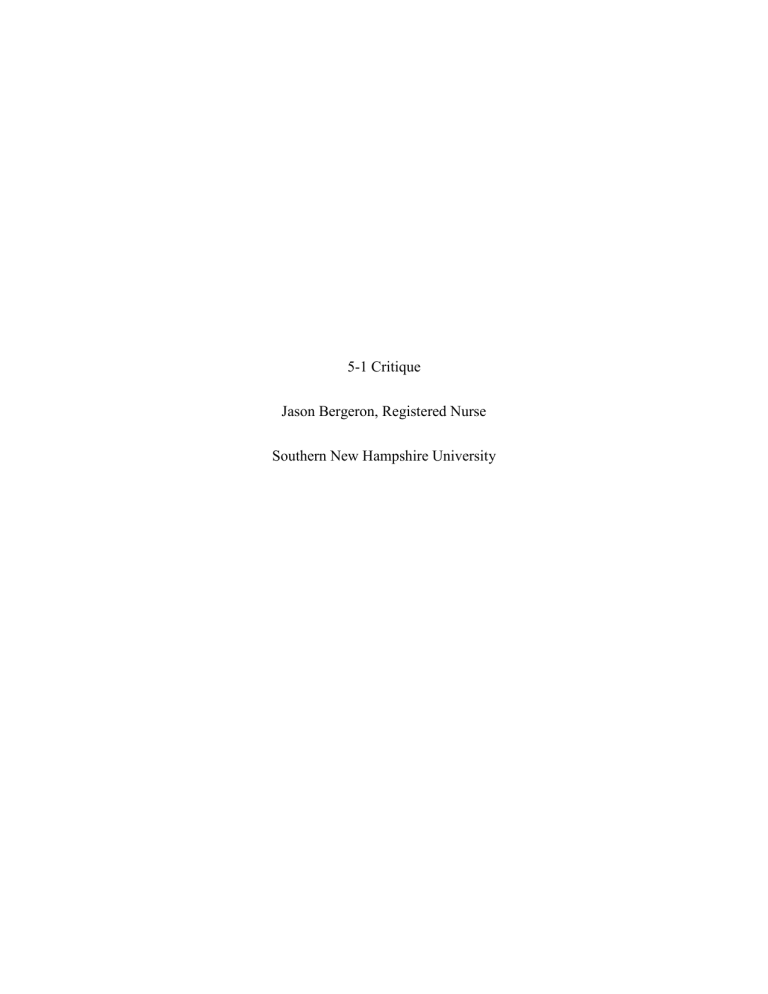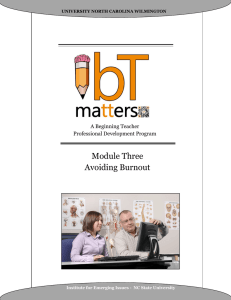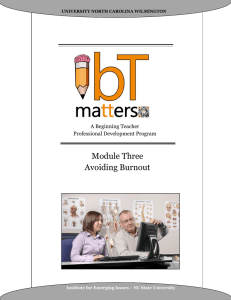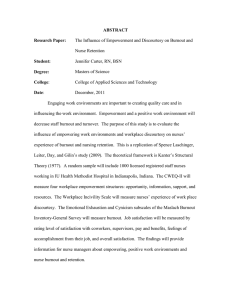
5-1 Critique Jason Bergeron, Registered Nurse Southern New Hampshire University The purpose of the study conducted by Dev, Fernando, Lim, and Consedine (2018) was to explore how compassion impacted the phenomenon of nursing burnout and barriers to compassion. Their proposed research question was, “Does the development of self-compassion reduce the experience of carer, patient, environmental, and clinical barriers to compassion.” Although past research has explored many issues related to nursing burnout, it has yet to identify the relationship between self-compassion and burnout. The authors believed that self-compassion could buffer the association between negative psychological constructs as well as physical and mental health. In order to obtain the necessary data, the authors gathered information from 799 registered nurses who were recruited through a non-random convenience sampling. Utilizing voluntary participation, subjects were asked to complete an anonymous questionnaire that measured the variables of burnout, barriers to compassion, and self-compassion. Proper action was taken to exclude participants who provided data that were not in current patient contact. The methods used in this study were rigorous as the authors addressed potential weaknesses of the design and planned accordingly. The study used appropriate validity scales to measure the aspects they were attempting to research. To measure professional burnout, they used the Copenhagen Burnout Inventory and in their study was found to have a Cronbach alpha of .92 for internal reliability. The second scale used was the Barriers to Physician Compassion Questionnaire, which was trialed before implementation to ensure accuracy as physicians and nurses had different roles in the healthcare system. The final scale used was the Self-Compassion Scale- Short Form which has been shown to have both a high internal reliability as well as high face, content, convergent and divergent reliability. Given the findings that were obtained through this studies research, the conclusions reached were appropriate and accurate. There was a signification correlation between instances of greater burnout and the four barriers to compassion which were feeling burnt out, the work environment, patients and families, and the clinical picture. As with a correlational design approach, there was the incapability of causality between variables. I do believe that the strengths of this article do outweigh its weakness though. There is enough evidence provided by the authors that establishes connections between variables especially the link between self-compassion and the mitigation of burnout. Through proper collection, analyzation, and presentation of data, I believe that the authors of this study did successfully substantiate their proposed research question. There were however some limitations to this study, with the major limitation being the inability to evaluate specific types of burnout and their relation to self-compassion. In further expanding upon the findings of this study, I suggest performing an experimental research study that teaches a nurse how to perform mindfulness and how it impacts the four barriers to compassion. References Dev, V., Fernando, I. A. T., Lim, A. G., & Consedine, N. S. (2018). Does self-compassion mitigate the relationship between burnout and barriers to compassion? A cross-sectional quantitative study of 799 nurses. International Journal of Nursing Studies, 81, 81–88. https://doi-org.ezproxy.snhu.edu/10.1016/j.ijnurstu.2018.02.003




